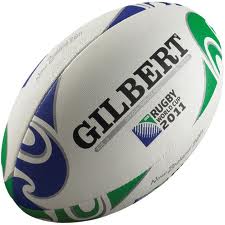RUGBY
Rugby football developed from a version of football played at Rugby School and was
originally one of several versions of football played at English public schools during the 19th
century
The game of football that was played at Rugby School between 1750 and 1859
permitted handling of the ball, but players were not allowed to run with it in
their hands towards the opposition's goal.[ With no limit to the number of players per side,
hundreds would participate in an enormous rolling maul, sometimes resulting in
major injuries. The innovation of running with the ball was introduced between
1859 and 1865. The popular myth of the sport's origin states that Rugby pupil William Webb
Ellis broke the local rules by running forward with the ball in his hands in
1823. Rugby School produced the first written rules for their version of the
sport in 1845.
In the result that the teams were still tied at the end of the match, a drop goal shootout was held. The
selected kickers of the two teams would have one shot at the goal each and would
take turns shooting at the goal until one of the kickers missed
RULES
Distinctive features common to both rugby codes include the oval ball and the
ban on throwing the ball forward, so that players can gain ground only by
running with the ball or by kicking it. As the sport of rugby league moved
further away from its union counterpart, rule changes were implemented with the
aim of making a faster-paced and more try-orientated game.
The main differences between the two games, besides league having teams of 13
players and union of 15, involve the tackle and its aftermath:
- Union players contest possession following the tackle: depending on the situation, either a ruck or a maul can occur. League players may not contest possession after making a tackle: play is continued with a play-the-ball.
- In league, if the team in possession fails to score before a set of six tackles, it surrenders possession. Union has no six-tackle rule; a team can keep the ball for an unlimited number of tackles before scoring as long as it maintains possession and does not commit an offence.
In England, rugby union i Is widely regarded as an "establishment" sport, played
mostly by members of the upper and middle classes
In Wales, rugby is associated with small village teams which consisted of coal
miners and other industrial workers playing on their days off.
RUGBY.
In rugby union, the International Rugby Board the size and shape of the ball
under Law 2(also known as Law E.R.B); an official rugby union ball is oval and
made of four panels, has a length in-line of 280–300 millimetres, a
circumference (end to end) of 740–770 millimetres, and a circumference (in
width) of 580–620 millimetres. It is made of leather or suitable synthetic
material, and may be treated to make it water resistant and easier to grip



No comments:
Post a Comment